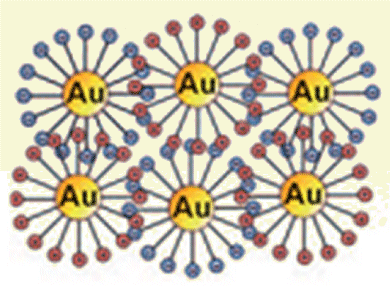Researchers at Northwestern University, USA, have described nanoparticle crystals of different internal architectures and stabilized with chemically cleavable cross-links effectively “amplify” the presence of cross-link-specific analytes.
Bartosz Grzybowski and co-workers employed Au and Ag nanoparticles (NPs) with self-assembled monolayers of suitable dithiols (either positively charged N,N,N-trimethyl(11-mercaptoundecyl)ammonium chloride or negatively charged, deprotonated mercaptoundecanoic acid) to detect and amplify the presence of chemical and enzymatic analytes. The cross-linked crystals are insoluble in water and when an analyte (an anion, a small molecule, or an enzyme) is present, it cuts the cross-linkers so that each crystal liberates millions of individual, highly colored NPs. Effectively, once a small hole is “pinched” in the crystal’s cross-linked “skin” NPs spill from the crystal’s interior into solution (see figure). This mode of sensing has general potential for different cross-link/analyte combinations.

- Nanoparticle Supracrystals and Layered Supracrystals as Chemical Amplifiers
B. Kowalczyk, D. A. Walker, S. Soh, B. A. Grzybowski,
Angew. Chem. Int. Ed. 2010, 49
DOI: 10.1002/anie.201002295 - B. Kowalczyk, D. A. Walker, S. Soh, B. A. Grzybowski,
Angew. Chem. 2010, 122.
DOI: 10.1002/ange.201002295



